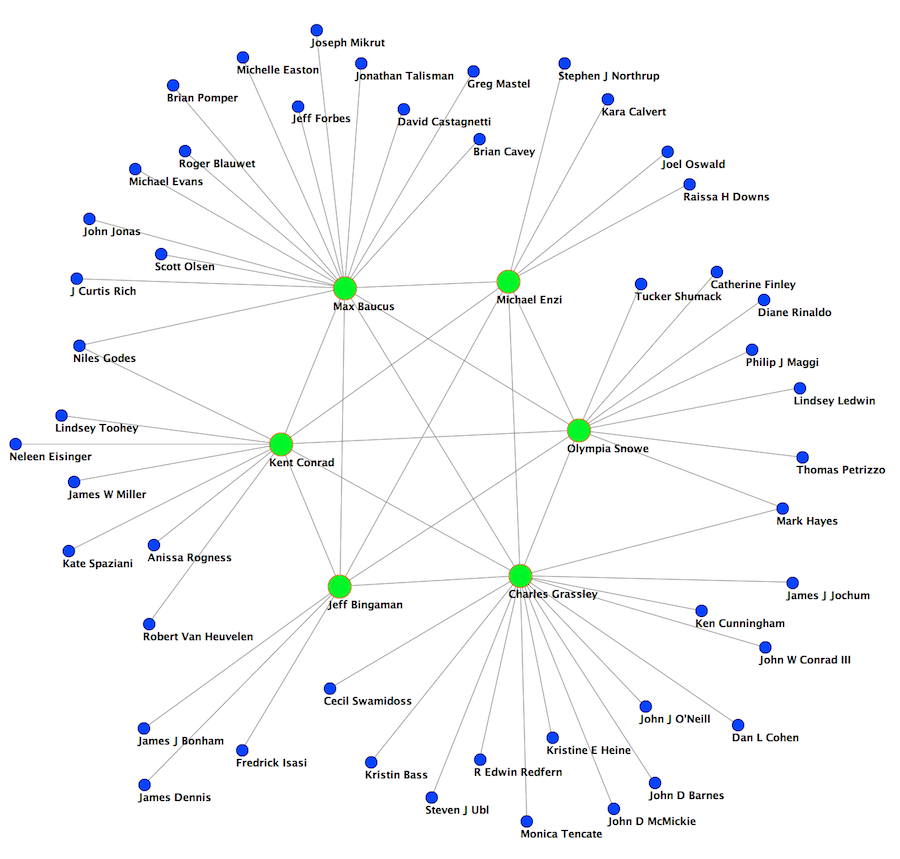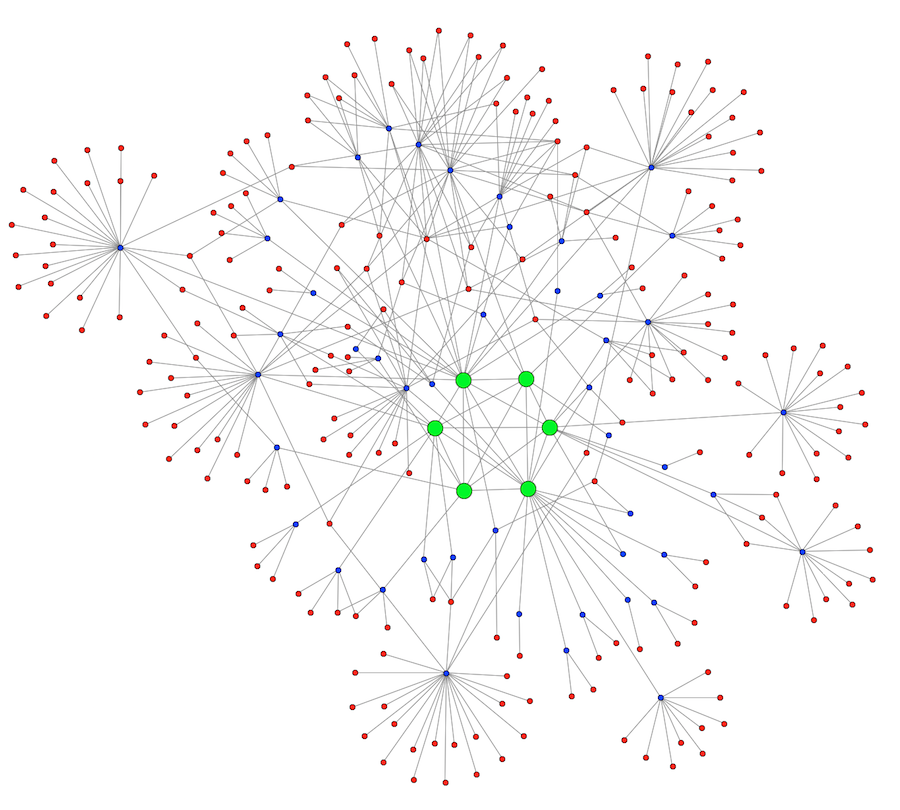
|
Lobbying Networks in Healthcare Reform
by Valdis Krebs, Chief Scientist @ Orgnet, LLC
|
In 2009, the U.S. health care reform process is focused on a group of 6 senators, commonly referred to as the "Gang of Six." The six senators are shown in the social graph below in Figure 1 as green nodes. Also, on the map are lobbyists [blue nodes] who were hired by various companies in the health care industry to influence the six key senators.
Below, in Figure 2, we see all of the players in how health care legislation was made. The red nodes are the 220 companies and organizations that have an interest in health care legislation in the U.S. These organizations are linked to the lobbyists they hire, represented by the blue nodes, who try to influence the 6 senators to write favorable legislation for their 220 clients The connections in the network map are all flows of influence... from the outside in. Industry clients pass requests and information to lobbyists they hire who then package it and pass it on to the politicians. The lobbyists are connected to the politicians via previous work ties -- person X used to work for Senator Y, and now lobbies Senator Y using previously established ties of trust to relay his/her client's message.
Legislation is a complex process. In the maps above there are no nodes that represent the voice of the voters who try to influence their representatives directly through telephone and social media messages. Unfortunately face-to-face time with a known lobbyist is more influential than a stranger's voice on a phone, or suggestions on a tweet -- even if they live in the politician's state. We thank OpenSecrets.org and the Center for Responsive Politics for the lobbying data. |

